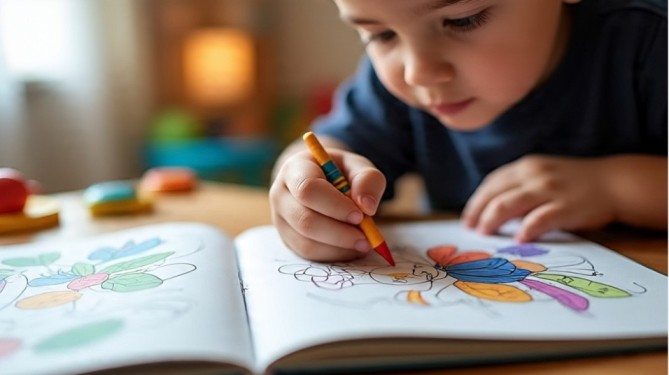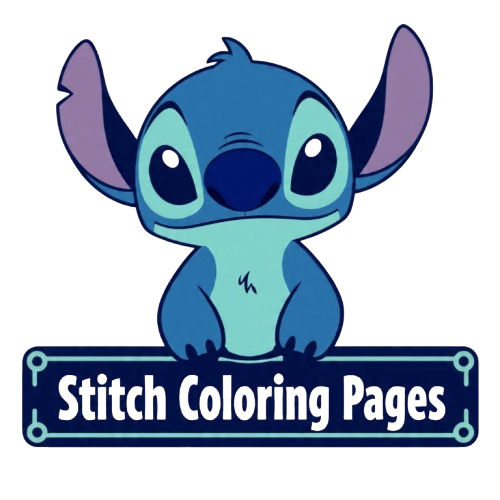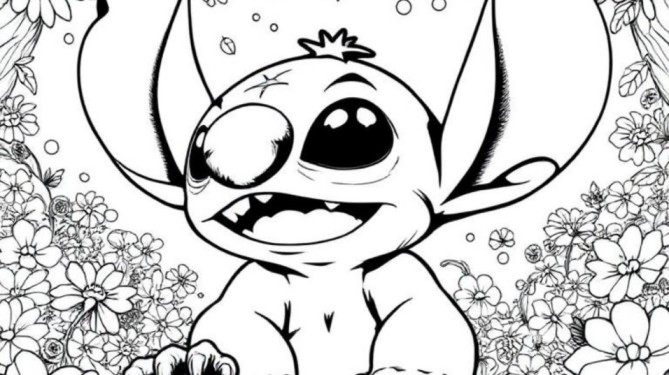How Stitch Coloring Pages Help Develop Creativity in Children
Coloring pages have long been recognized as a staple of childhood learning and entertainment. In recent years, Stitch coloring pages featuring the beloved character from Disney’s Lilo & Stitch have emerged as a popular choice for parents, educators, and therapists. Beyond their entertainment value, these themed pages can play a crucial role in fostering creativity in children. This article explores how Stitch coloring pages help develop creativity, the underlying educational mechanisms at work, the tradeoffs of different approaches, and why thoughtful engagement matters.
The Power of Coloring in Early Childhood Development

Coloring is more than just a fun pastime it’s a structured activity that supports several aspects of child development:
- Fine motor skills: Coloring strengthens the small muscles in the hands and fingers.
- Color recognition and blending: It helps kids learn colors and how they interact.
- Focus and concentration: Completing a page requires sustained attention.
- Emotional expression: Children often express feelings through color and form.
- Imagination: Choosing colors and patterns allows kids to explore visual creativity.
When children interact with Stitch coloring pages, they’re not just staying busy they’re building cognitive and emotional skills.
Why Stitch? The Character’s Unique Appeal
Stitch is not just another cartoon figure. As a mischievous but lovable alien, he embodies both chaos and heart, an unusual mix that sparks curiosity and imagination. Stitch coloring pages provide:
- Emotional relatability: Kids connect with Stitch’s sense of play, rebellion, and eventual love for family.
- Diverse settings: From outer space scenes to Hawaiian backdrops, the variety in environments enhances visual exploration.
- Expressive poses: Stitch’s energetic actions and facial expressions challenge children to use colors dynamically, encouraging interpretive creativity.
This rich character background inspires more than passive coloring; it encourages kids to tell stories with their crayons.
Key Factors That Impact Creativity Development Through Coloring
To understand how Stitch coloring pages aid creativity, we must examine several influencing factors:
1. Structure vs. Freedom
- Structured coloring pages, like Stitch outlines, offer form and visual guidance.
- Free drawing, by contrast, allows unbounded creativity but may overwhelm younger children.
Tradeoff: Stitch coloring pages provide a middle ground where children can operate within recognizable characters while making independent color decisions.
2. Color Choices and Symbolism
- Kids often assign meaning to colors. Coloring Stitch purple, for instance, instead of blue can reflect imaginative reinterpretation.
Challenge: Parents and teachers must balance guiding children and allowing free expression.
3. Interactive Engagement
- Some coloring pages include scenes or short narratives, prompting children to develop a story around the image.
- Engaging children in conversation about their choices fosters critical thinking and creative storytelling.
Impact: Simply handing a child a coloring page is not enough; meaningful interaction is key to deeper creative development.
Educational Uses of Stitch Coloring Pages
Educators and therapists often incorporate character coloring into structured programs. Stitch pages are especially effective in:
- Language arts: Ask students to write a story about the scene they colored.
- Emotional development: Use Stitch’s facial expressions to discuss feelings.
- Art class: Explore shading, color gradients, and character redesigns.
Tradeoff: While Stitch coloring pages are engaging, relying solely on one character may limit exposure to diverse themes and ideas.
Digital vs. Print: The Format Debate
With the rise of tablets, many Stitch coloring pages are now available digitally. Each format has benefits and limitations:
- Digital coloring apps:
- Pros: Easy to erase, wide color options, interactive features.
- Cons: Limited tactile feedback, screen exposure concerns.
- Printed coloring pages:
- Pros: Develop fine motor skills, more sensory feedback.
- Cons: Less forgiving of mistakes, recurring paper use.
Consideration: A hybrid approach using both formats can enhance creativity while meeting practical needs.
Challenges and Considerations for Parents and Educators
While Stitch coloring pages can be powerful tools, several challenges exist:
- Over-reliance on templates: Kids might struggle with blank-page creativity if always given ready-made characters.
- Passive use: Without discussion or encouragement, coloring can become a rote activity.
- Inclusivity: Not all children may relate to Stitch. Diversity in characters and themes is vital.
Solution: Rotate activities between character-based coloring, open-ended drawing, and collaborative storytelling.
The Broader Impact on Childhood Creativity
When thoughtfully incorporated into learning and play, Stitch coloring pages can:
- Promote independent thinking
- Encourage aesthetic exploration
- Reinforce narrative building
- Support emotional intelligence
These gains contribute to a child’s overall creative development and prepare them for more complex cognitive tasks in later stages of life.
Final Thoughts
Stitch coloring pages help develop creativity in children by merging visual appeal with emotional and imaginative engagement. Their value lies not just in the act of coloring but in the thoughtful experiences that surround it encouraging freedom, storytelling, and expression within a recognizable framework.
For parents and educators, the key lies in balance: between structure and freedom, between guided and open-ended use, and between digital and print formats. Used wisely, Stitch coloring pages can be much more than a pastime; they can be a gateway to creative growth.

